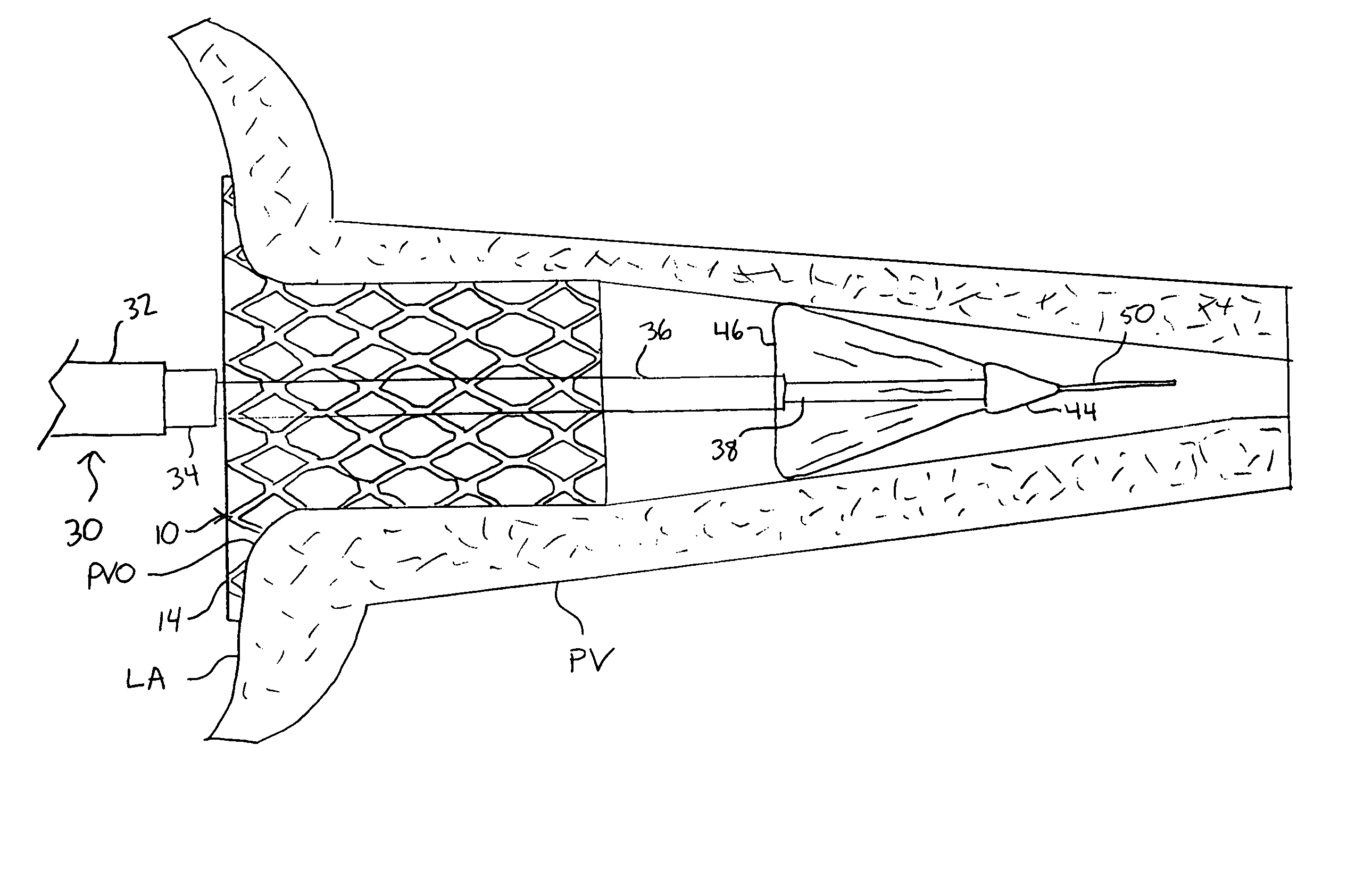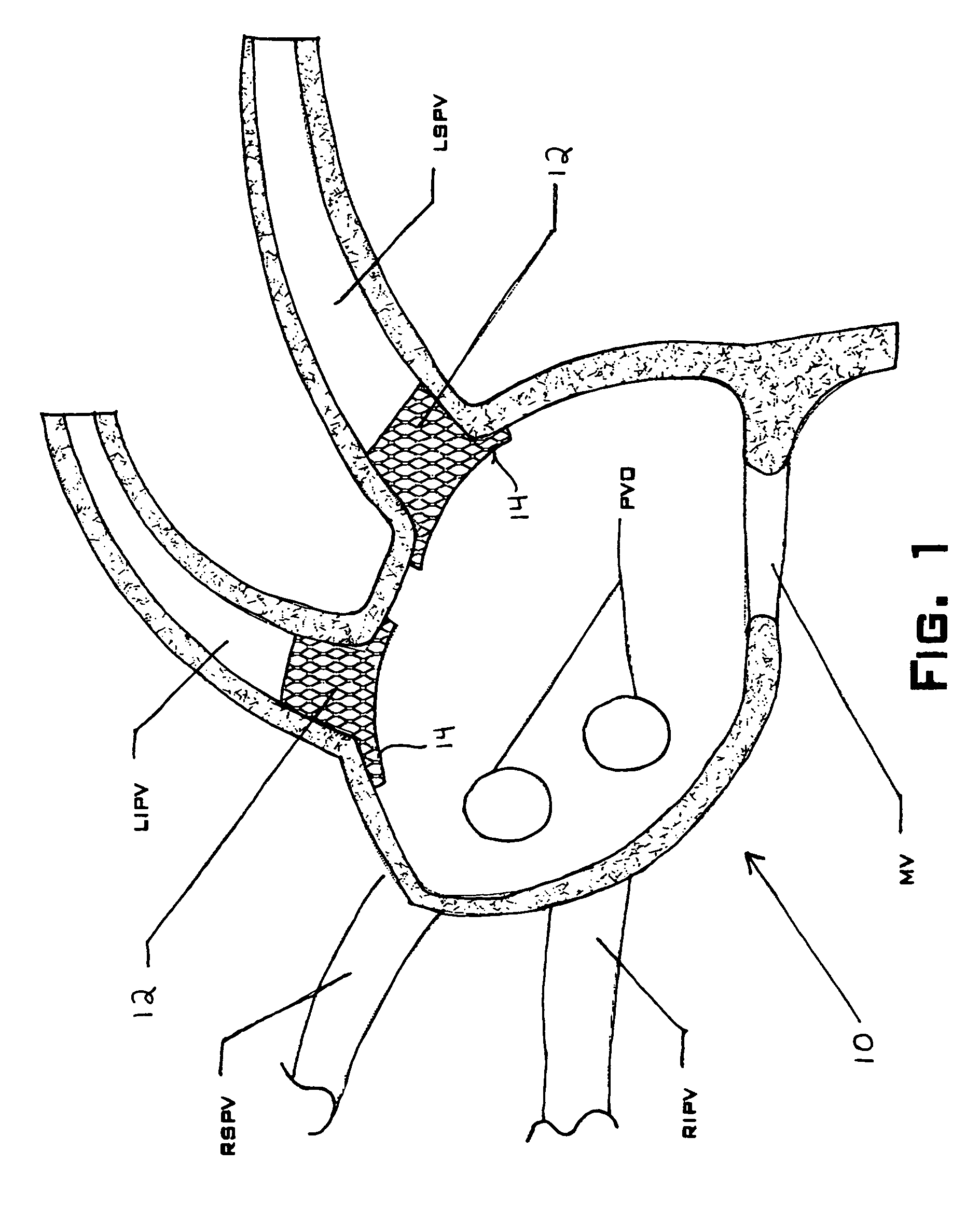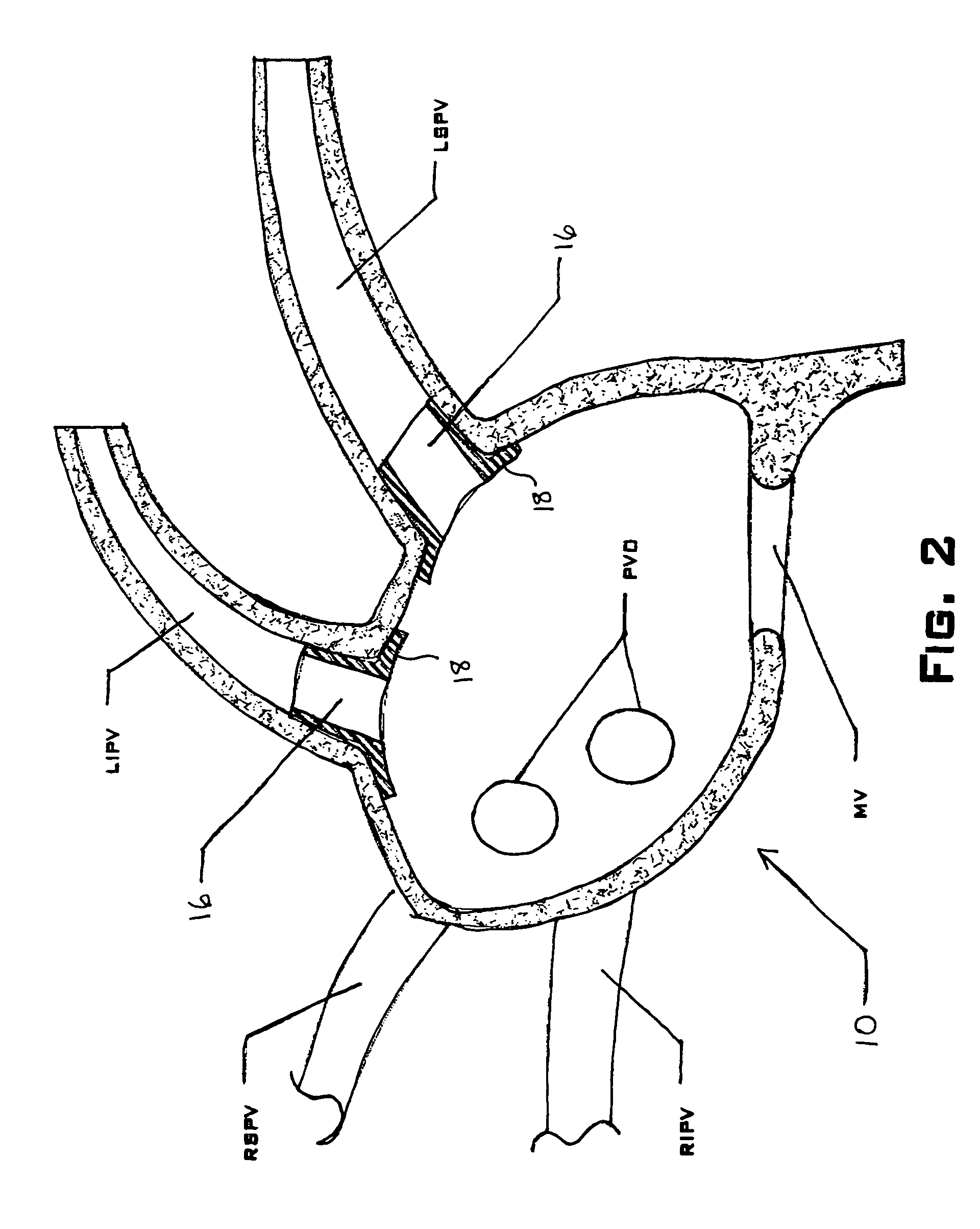Device and method for electrical isolation of the pulmonary veins
a technology of electrical isolation and pulmonary veins, applied in the field of paroxysmal atrial fibrillation treatment, can solve the problems of long recovery time of this invasive procedure, and achieve the effect of reducing tissue conductivity, effective electrical isolation, and not jeopardizing the patency and flow capacity of the pulmonary vein
- Summary
- Abstract
- Description
- Claims
- Application Information
AI Technical Summary
Benefits of technology
Problems solved by technology
Method used
Image
Examples
Embodiment Construction
[0035]FIG. 1 shows a preferred use of an embodiment of a structure 10 of the present invention. The structure 10 in this embodiment is a stent 12 deployed in both the left inferior pulmonary vein (LIPV) and the left superior pulmonary vein (LSPV). The stent 12 includes a flared end 14 that is constructed and arranged to extend past the ostium of the the pulmonary vein and into the left atrium (LA).
[0036]The stent 12 is preferably constructed and arranged to maintain an outward force on the endothelium of the pulmonary vein and the left atrium, thus keeping the stent 12 in place and operating to prevent electrical communication between the pulmonary vein and the left atrium. The outward force is obtained through the use of an expandable stent, such as a self-expanding or mechanically expanding stent. The outward force necessary is dependent on the principal being practiced to prevent the electrical communication between the pulmonary vein and the left atrium.
[0037]For example, one me...
PUM
| Property | Measurement | Unit |
|---|---|---|
| Flow rate | aaaaa | aaaaa |
| Structure | aaaaa | aaaaa |
| Electrical conductor | aaaaa | aaaaa |
Abstract
Description
Claims
Application Information
 Login to View More
Login to View More - R&D
- Intellectual Property
- Life Sciences
- Materials
- Tech Scout
- Unparalleled Data Quality
- Higher Quality Content
- 60% Fewer Hallucinations
Browse by: Latest US Patents, China's latest patents, Technical Efficacy Thesaurus, Application Domain, Technology Topic, Popular Technical Reports.
© 2025 PatSnap. All rights reserved.Legal|Privacy policy|Modern Slavery Act Transparency Statement|Sitemap|About US| Contact US: help@patsnap.com



